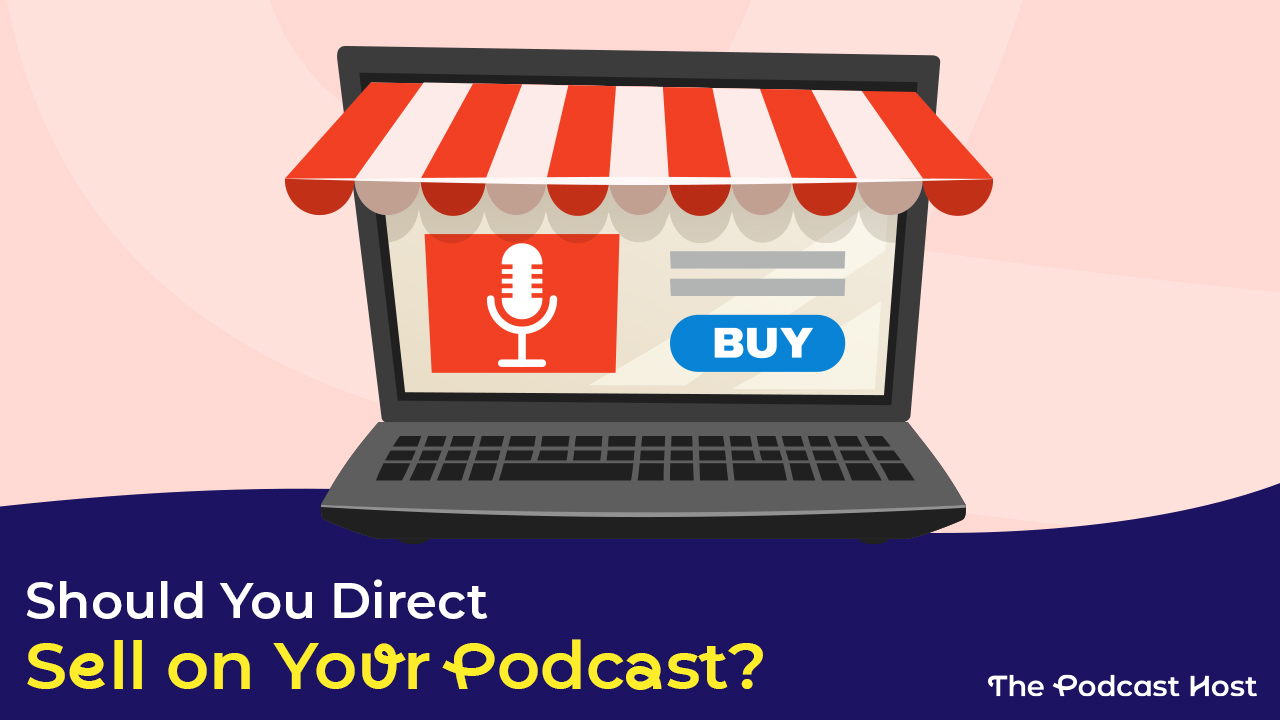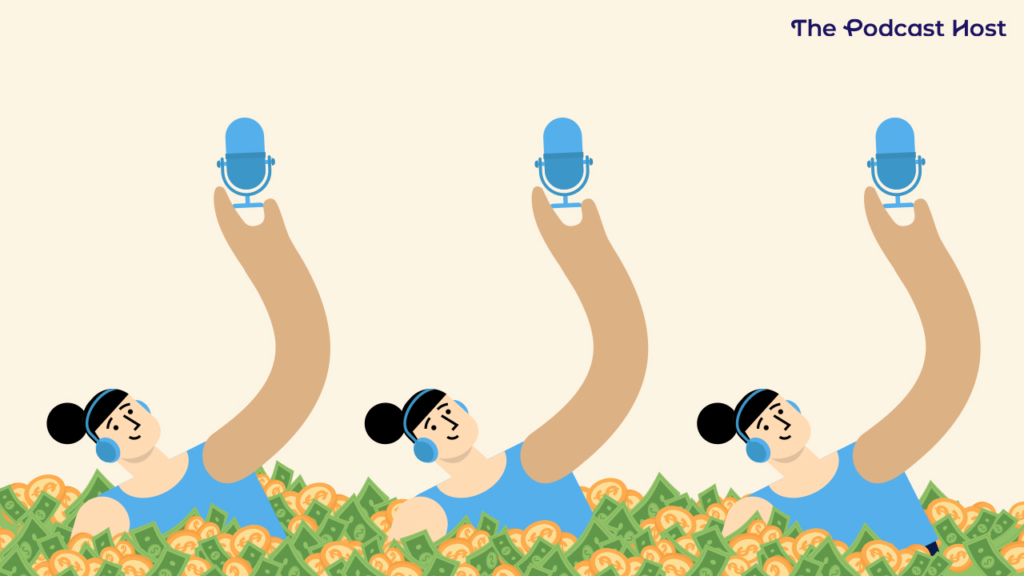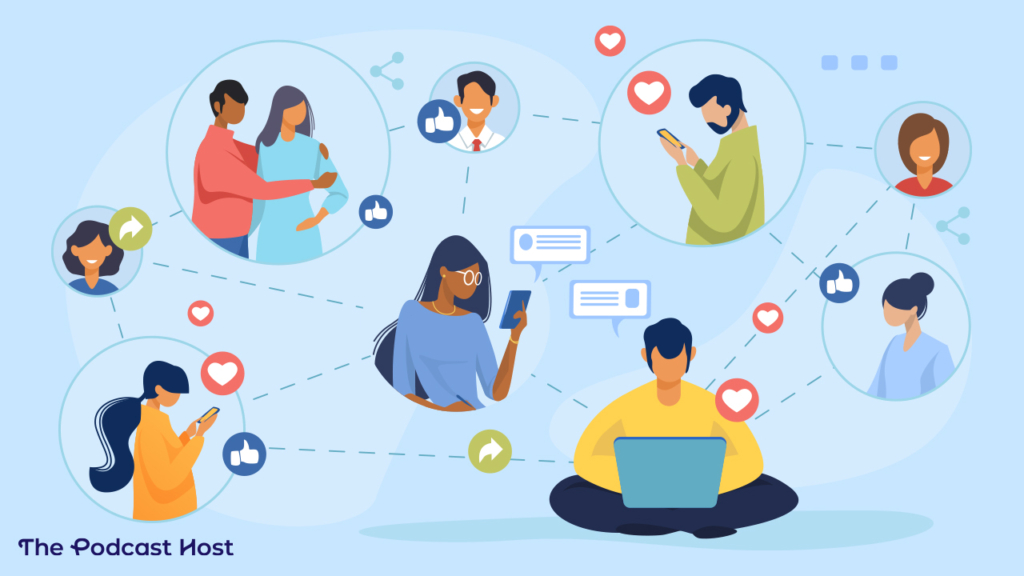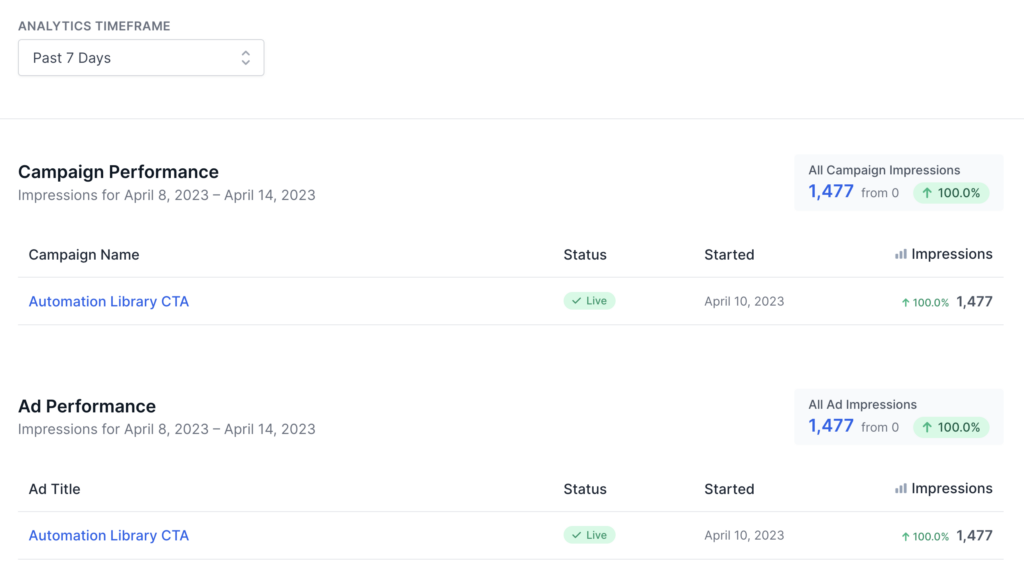Should You Direct Sell to Your Audience?

Your podcast is a great way to build authority and nurture/deepen a relationship with your listeners. Can you serve them if you’re also direct selling them?
This can be a hotly debated topic in some circles. One side feels like you should deliver only value and then maybe, at the end of the show, ask people to join your mailing list.
But as I tell my kids, if you don’t ask, you don’t get.
If you’re in my camp, the answer is a resounding yes. Podcasts cost money, and you likely want to get a return on your investment at some point, right?
So let’s look at some effective ways to sell directly to your audience.
What Is Direct Selling?
The formal definition is selling your product directly to consumers without having some middle entity, like a retail store.
Since that’s super common these days, especially among self-employed folks, for the purposes of this article, I have a slightly different definition.
Direct selling on your podcast is asking for the sale in the episode without getting them on your mailing list.

So instead of your podcast’s call to action being, “Get this free resource,” “join my webinar,” or anything that ends in, “…or wherever you get your podcasts,” you tell listeners to buy your new thing.
It’s like an ad spot for your own product or service.
How Is It Different From Sponsor Ads?
Logistically, this might be treated as a sponsor spot. If you’ve vowed only ever to have three promos in an episode, then you’re effectively making your direct sell spot an advertiser of the show.
You’ll want to pick your spot for this if you don’t routinely have sponsors. I’ll talk more about that later.
The main reason selling your product or service differs from sponsor ads is that your sponsors borrow your authority and trust. Your own product has it built in.
Something I’ve been telling folks a lot lately is podcasting is a poor mechanism for discovery. That might change with YouTube entering the fray and Spotify’s recent changes, but right now, it’s tough to be found.
But podcasts are great at building and deepening relationships with your listeners. The people who tune in every week trust you and want more of your content. They are voting with their precious time to support you.
So when you sell something relevant to them, they are more likely to listen.
Most Podcasters Can’t Survive on Ads Alone
Some fantastic data came out last year, citing all of the ways podcasters make money. The conclusion? Advertising is not a sustainable model for most podcasters:
The takeaway from the study? The money is in consulting, coaching, courses, workshops, books, and memberships, not advertising.
According to the study, podcasters make most of their money from consulting and coaching (62%), online courses/workshops (39%), and books (27%). Just 14% of podcasters make money from sponsored content.
All that is to say: you need to direct sell to make appreciable money from your show.
Will Direct Selling Annoy My Listeners?
Of course, there’s always the concern that you could annoy your listeners.
The folks against direct selling will say you don’t want to alienate your listeners right off the bat with an “ad.”
I’d argue that most people expect ads and understand that the content needs to be paid for somehow. Heck, there’s a reason Netflix created an ad-supported tier, after all.
As Tom Webster from Sounds Profitable puts it:
An ad is a part of the “attention bargain” that all consumers are accustomed to making. If a listener leaves your podcast because of an ad, it doesn’t mean the ad was the problem. It means your content wasn’t worth the bargain.
This is especially true for your own products.
If you’re selling something that aligns with your podcast’s mission, you shouldn’t worry about annoying your listeners.
You Can Still Build Your Mailing List
The last point I want to address before getting into the how is, “What about building my mailing list?”
I indeed believe that this is one of, if not the best, calls to action you can have on your podcast.

However, I think there is a good way you can balance that CTA with a CTA to buy your product or service directly.
One example of this, especially if your podcast host supports dynamic content, is to do time-based CTAs. If there’s a time when it makes the most sense to direct sell, like if the doors to your course are open, you can have an all-episodes CTA during that time.
Then, during “off” times, use your CTA to build your mailing list.
What’s a Good Method for Direct Selling?
First, you should be mindful that this will work better for some podcasts than others.
If your podcast is a direct extension of your business, you’ll have an easier time selling.
It’s not impossible for a hobby podcast, but you likely need a bigger audience, depending on what you’re selling. For example, if you have a podcast on vintage baseball cards, maybe you sell a self-published book on how to evaluate old cards.
This is a great product you can promote pretty regularly throughout each episode, but you’ll need to move a lot of copies to make an appreciable amount of money.
But let’s say you have a podcast that perfectly aligns with your business. What do you do?
Here’s What I Recommend:
Have a pre-roll CTA, or a CTA right after the cold open, talking about this new product you have. State the benefit and how it’s an extension of everything you teach on your show.
Create an easily speakable URL to say on air. Maybe even offer an exclusive discount to listeners.
Have a couple of episodes dedicated to the problem you solve with your product. Pepper in mentions during the episode…but not too much. I try to mention it one to two times in a 30-minute podcast. And it needs to feel relevant to what you’re talking about.
If it comes up organically in any future episode, mention it there too.

You can also create urgency by making it a limited-time offer where “doors are open” for a short period. If your host allows dynamic content, you can create a spot and dynamically insert it at the front of every episode during the sale.
Finally, experiment a little. Don’t just set it and forget it. Try different benefits, CTAs, and even pricing. See if more people join your mailing list or buy the product directly.
You can also try coupon codes exclusively for podcast listeners. Some feel discounts devalue their products or cause bad consumer habits. My personal philosophy is that if someone needs your product now and the value is there, they’ll buy it.
Something that works for me might not work for you.
Wrapping Up
The important thing to remember when you direct sell to your audience is that the product or service should align with your podcast’s mission. If you talk about preparing for half marathons, perhaps you can:
- Sell a training guide.
- Create a private podcast where you offer encouragement for people to listen to as they run.
- Offer 1-on-1 coaching packages.
And don’t forget to experiment! Try different CTAs, placements, and listen to your audience to see what’s working!
